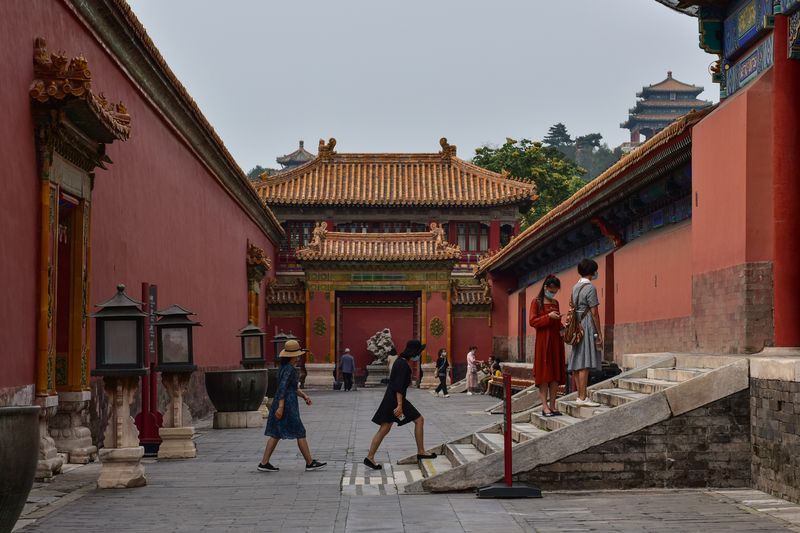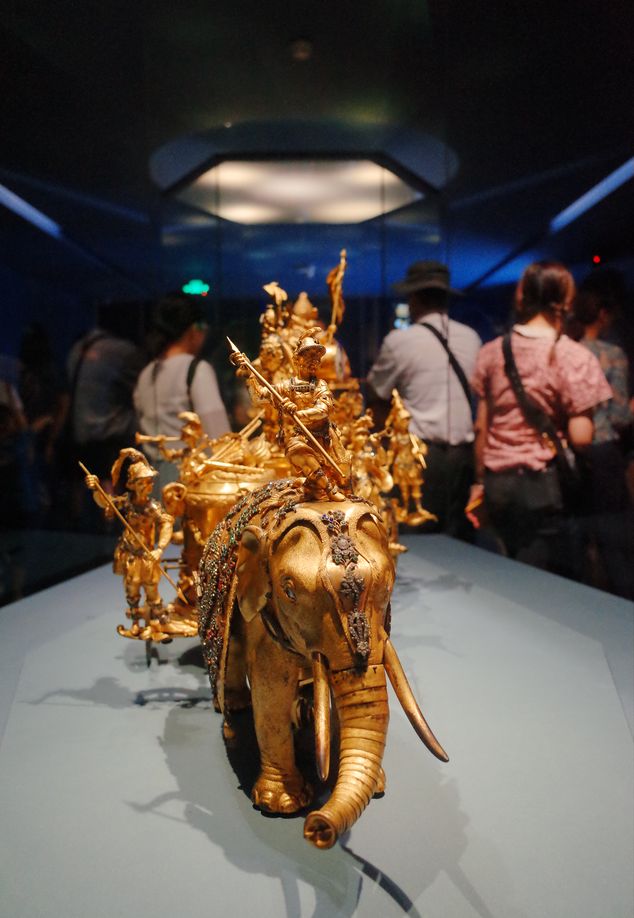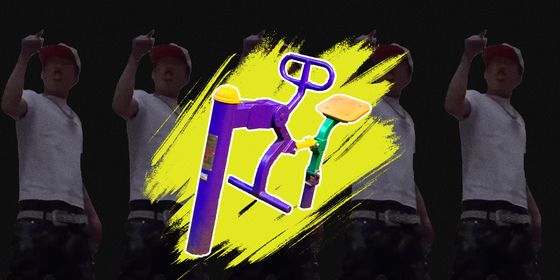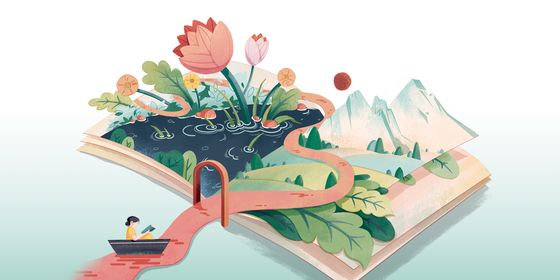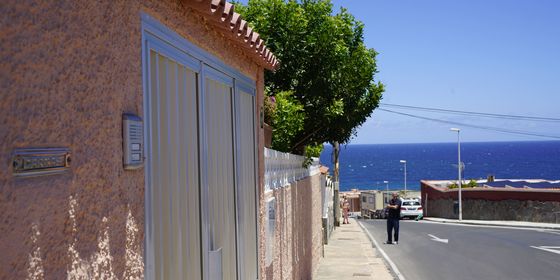Arson, thieving eunuchs, military invasion: the Forbidden City’s journey from imperial palace to public museum was anything but smooth
When Zhu Di (朱棣), the third emperor of the Ming dynasty (1368 – 1644) ordered a grand palace built in Beijing in 1406, he probably didn’t envision vast crowds of commoners lining up to enter every weekend and public holiday, nor history buffs visiting the sprawling public museum inside.
The grand palace, which became known as the Forbidden City, was the exclusive residence of 28 emperors from the Ming and Qing (1616 – 1911) dynasties, and was a symbol of the supreme power of China’s imperial rulers. It became a museum in 1925, and is now one of the most famous tourist attractions in the country—probably much to Zhu Di’s chagrin.
The process of opening the Forbidden City to the public, which culminated in 1925, was arduous. The first proposal of building a “royal household museum” was put forward 20 years earlier, in 1905, when politician and entrepreneur Zhang Jian (张謇) wrote a memorial to the emperor, suggesting he establish a royal museum in Beijing, which could display objects collected by the royal family. “[A museum] could not only help protect the culture of the nation, but also benefit young students and scholars,” he wrote. According to Zhang’s blueprint, similar museums should be built in all the provinces, so that people all over the country could have access to these great educational resources.
However, Zhang’s appeal was rejected. Apparently, it was unimaginable for the rulers to allow ordinary people to gaze upon the royal collection.
What Zhang couldn’t have envisioned, however, was that the next time he proposed to build a national museum, the Qing government would already have become a footnote in history. In 1911, the Xinhai Revolution, a Chinese bourgeois democratic revolution led by Sun Yat-Sen, overthrew the Qing dynasty. One year later, the last emperor, Puyi (溥仪), announced his abdication from the throne. The nation thus became the Republic of China, and the long line of Chinese emperors was permanently severed.
The Republican government and the late Qing government reached an agreement that permitted the emperor and his family to continue to reside in the rear quarters of the Forbidden City, together with hundreds of eunuchs, servants, and guards. Though the agreement stated that the “private property of the royal family would be specially protected by the Republican government,” they did not clarify the ownership of the artifacts and antiques stored within the palace walls.
In 1913, Zhang once again proposed to establish a national museum. This time, his idea was accepted by the Republican government. In 1914, the government established the “Gallery of Antiquities (古物陈列所)” often referred to as the “Government Museum” in English, ordering the royal collections be relocated from the summer capital of Rehe (Chengde) and the former Manchu capital of Shenyang to the Forbidden City. The Wuying Hall and the Wenhua Hall of the palace were used to display these objects. In 1914, the Government Museum was opened to the public, displaying bronze and porcelain from the imperial kilns.
Yet the move was not without its critics. Writer Lu Xun (鲁迅) visited the museum on October 24 that year, and wrote in his diary that the museum “was just like an antique shop.” Nevertheless, the Government Museum was China’s first state-run museum, and is widely recognized as the precursor to the Palace Museum of today.
Most relics originally stored in the Forbidden City were still under the custody of the deposed Qing emperor and his family. Few envisioned the presence of these artifacts would threaten the very survival of the palace. In 1923, Puyi decided to make an inventory of the palace collection. Since many objects couldn’t be accounted for, Puyi decided to investigate the matter. Hearing the news, many eunuchs panicked, having long smuggled treasures from the palace and sold them to antique dealers in the city. In order to cover their tracks, they set the palace alight, destroying countless relics in the process.
Puyi was apparently aware of what had been happening. He wrote in his autobiography From Emperor to Citizen (《我的前半生》): “Since I could understands things, I often heard of theft, fire, and murder that happened in the palace. When I got married, theft had become very severe: just as our wedding finished, the treasures on the empress’s phoenix coronet had already been replaced by a fake.”
Though Puyi expelled the eunuchs after the big fire, he himself eventually joined the ranks of the smugglers. With the help of his brother, Pujie (溥杰), who lived outside but often came to the palace, Puyi sold thousands of items from the imperial collection. In addition, he also used palace treasures as collateral to borrow money from banks. In 1924, Puyi offered hundreds of items to the Tianjin Salt Industry Bank in exchange for 800,000 yuan in cash. “Such mortgages and trades happened several times every year, especially during festivals when I needed to spend money,” recalls Puyi in his autobiography.
Also in 1923, the congress of the Republican government planned to build a congressional hall. Some congressmen advised dismantling the Taihe Hall, Zhonghe Hall, and Baohe Hall of the Forbidden City—the three main halls of the palace—so that they could construct a Western-style legislative building.
In response, Wu Peifu (吴佩孚), a powerful warlord at that time, sent a telegram to the president, the premier, the minister of internal affairs, and the minister of finance, opposing the plan to dismantle the palace halls. “It’s not just a miracle of China, but also a treasure of the whole world,” argued Wu. “...if it is demolished, then China will lose such majestic ancient architecture and become the laughingstock of all other countries. Even if we don’t care about that, how can we have the heart to destroy a palace with a history of hundreds of years just to satisfy the selfish desires of the few?” After this telegram was published in a newspaper, people of all walks of life expressed support for Wu, and the palace was saved.

Warlord Feng Yuxiang in 1948. Feng initiated the Beijing Coup in 1924 and expelled the former imperial family of the Qing dynasty from the palace (VCG)
In October 1924, warlord Feng Yuxiang (冯玉祥) launched the Beijing Coup, and managed to take control of the city. In November that year, Feng expelled Puyi and his family from the palace, and modified the government’s agreement with them. The Qing imperial family was only allowed to take away their personal belongings, with the remaining palace artifacts designated as property of the government.
On November 6, 1924, the government organized the Committee for Liquidation of the Qing Household, a special committee for the disposition of imperial possessions. The committee soon began to prepare a catalog of the imperial collections, which was widely viewed as a curtain-raiser for the establishment of a public museum. Nine months later, the committee published a 28-volume inventory, which numbered over 1.17 million pieces.
On October 10, 1925, the National Day of the Republic of China, the Forbidden City was officially converted into a public museum, named the “Palace Museum.” For the next 23 years, it sat alongside the Government Museum within the former home of the emperors, until the two were merged in 1948. Most of the collection was evacuated to Nanjing under the threat of Japanese invasion from 1933 onward, and close to 3,000 artifacts ended up in Taiwan when the Nationalists retreated to the island. After the establishment of the PRC in 1949, the government took a new inventory of the artifacts and renovated the museum.
Today, the Palace Museum has become a must-see attraction. Every year, millions of visitors come to bask in the rich history and culture on display—no longer forbidden, and certainly not forgotten.







